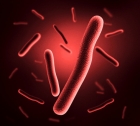Press monitoring
Scientists identify how harmless gut bacteria turn bad
15.2.2021 | Press monitoring
An international team of scientists has determined how harmless E. coli gut bacteria in chickens can easily pick up the genes required to evolve to cause a life-threatening infection. Their study, published in Nature Communications, warns that such infections not only affect the poultry industry but could also potentially cross over to infect...
Machine-learning how to create better AAV gene delivery vehicles
12.2.2021 | Press monitoring
Adeno-associated viruses (AAVs) have become promising vehicles for delivering gene therapies to defective tissues in the human body because they are non-pathogenic and can transfer therapeutic DNA into target cells. However, while the first gene therapy products approved by the Federal Drug Administration (FDA) use AAV vectors and others are...
Plant-based magnetic nanoparticles with antifungal properties
10.2.2021 | Press monitoring
A team of researchers from Immanuel Kant Baltic Federal University obtained magnetic nanoparticles using sweet flag (Acorus calamus). Both the roots and the leaves of this plant have antioxidant, antimicrobial, and insecticide properties. The extract of sweet flag was used as a non-toxic reagent for the manufacture of coated particles. The...
Machine learning generates realistic genomes for imaginary humans
8.2.2021 | Press monitoring
Machines, thanks to novel algorithms and advances in computer technology, can now learn complex models and even generate high-quality synthetic data such as photo-realistic images or even resumes of imaginary humans. A study recently published in the international journal PLOS Genetics uses machine learning to mine existing biobanks and generate...
Researchers engineer a tiny antibody capable of neutralizing the coronavirus
5.2.2021 | Press monitoring
Michael Schoof, a graduate student in the lab of Peter Walter, Ph.D., a renowned scientist specializing in protein sorting and cellular membranes, was part of a small team on a quixotic mission: to immobilize SARS-CoV-2, the novel coronavirus that causes COVID, by using a synthetic version of tiny antibodies originally discovered in llamas and...
Breast cancer-on-a-chip for testing immunotherapy drugs
3.2.2021 | Press monitoring
In recent years, scientists have been trying to develop "checkpoint inhibitor" drugs which will counteract these suppressive checkpoint interactions in order to re-activate the body's immune response to tumor cells. One of these drugs is U.S. FDA approved to treat metastatic melanoma; others are available or under development to treat other...
Vaccine 2.0: Moderna and other companies plan tweaks that would protect against new coronavirus mutations
1.2.2021 | Press monitoring
News from U.S. manufacturer Moderna that its COVID-19 vaccine is still “expected to be protective” against a virus variant first detected in South Africa came as a relief to scientists and the public. But the 25 January announcement included a caveat: Antibodies triggered by the vaccine appear to be a little less potent against the new variant,...
Gorilla treated with antibodies recovering from COVID, says US zoo
29.1.2021 | Press monitoring
An elderly gorilla was recovering from a serious case of COVID-19 after he was treated with cutting-edge synthetic antibodies, the San Diego Zoo said Monday. Veterinarians are now identifying which animals to inject with the zoo's limited supply of vaccines. Winston, 48, was one of several gorillas among the San Diego Zoo Safari Park's troop...
Using machine learning to identify ancient RNA viruses in the human genome
27.1.2021 | Press monitoring
A team of researchers affiliated with multiple institutions in Japan has used machine learning algorithms to help them identify ancient RNA virus remnants in the human genome. Prior research has shown that when a person (or other animal) is infected with a virus, that virus can sometimes change the host's DNA by adding some of its own RNA. Other...
3D-printed bone-replacement gel contains live bone cells
25.1.2021 | Press monitoring
Presently, if a patient is missing a section of bone due to accident or disease, it has to be replaced with bone harvested from elsewhere in their body. A new cell-containing gel, however, could one day be 3D printed right into the injury, where it would then harden. Scientists at Australia's University of New South Wales-Sydney have created a...





























